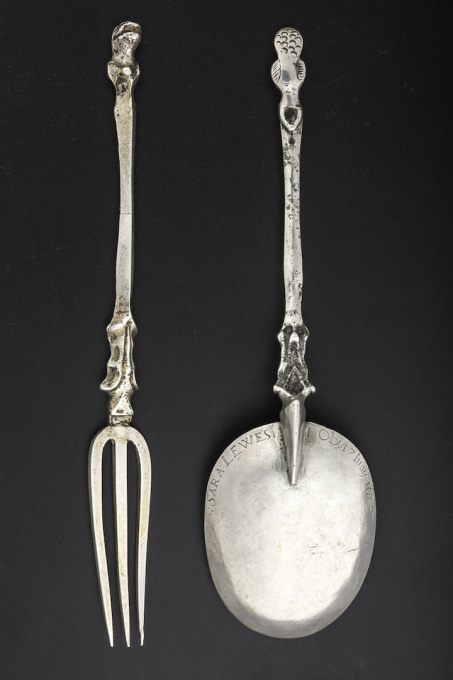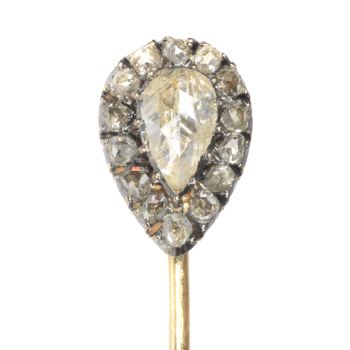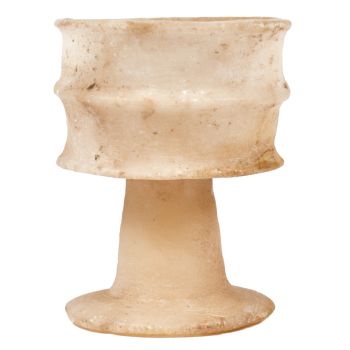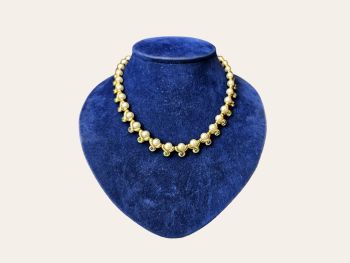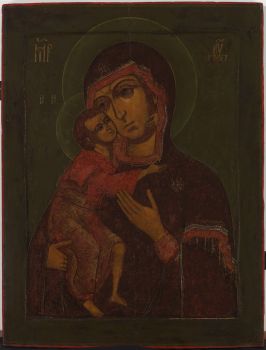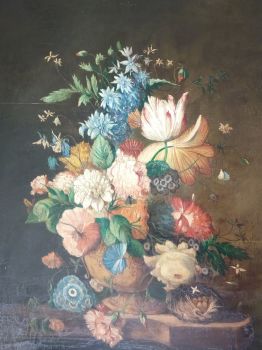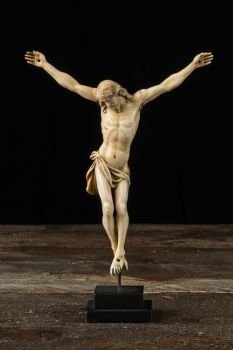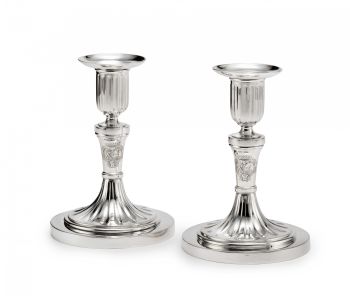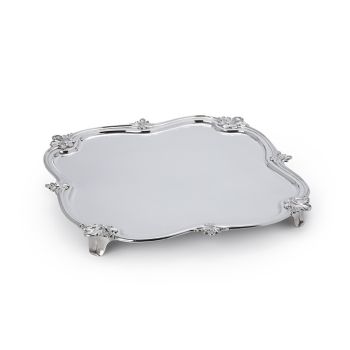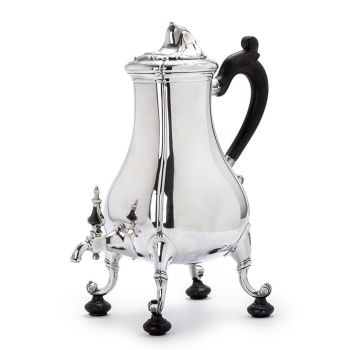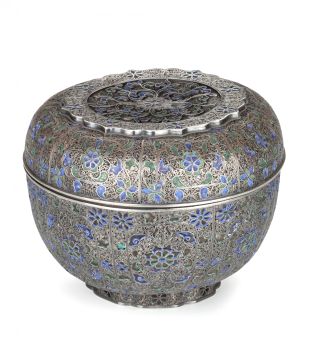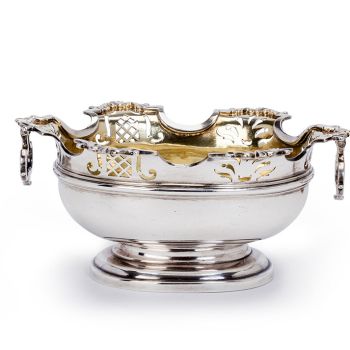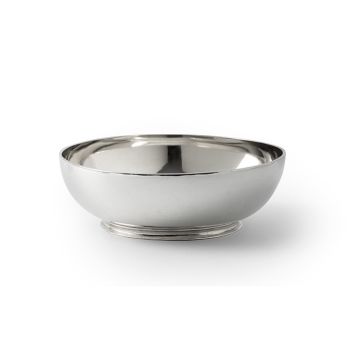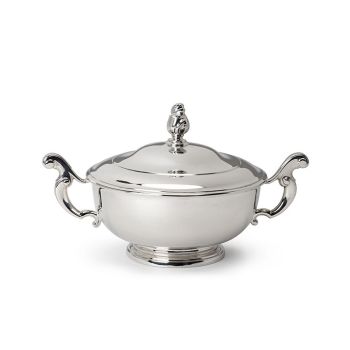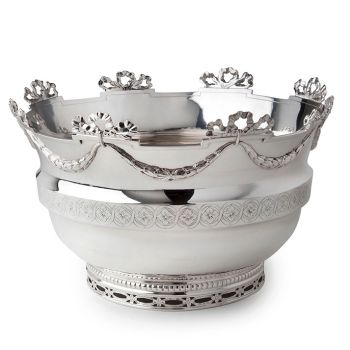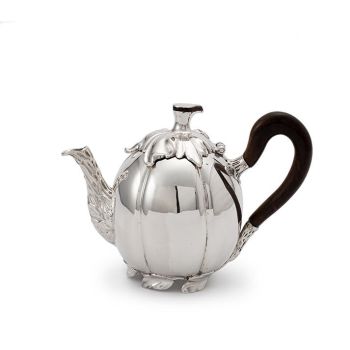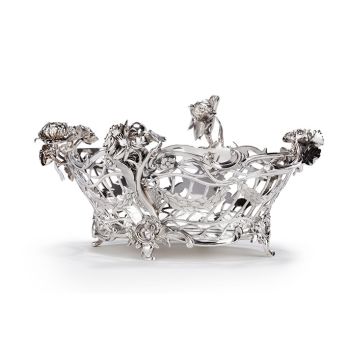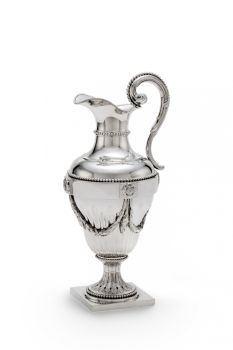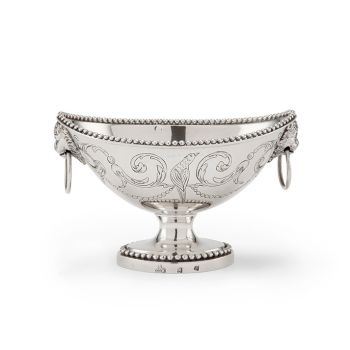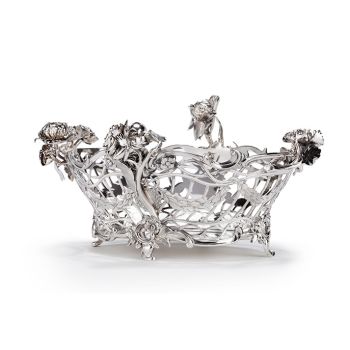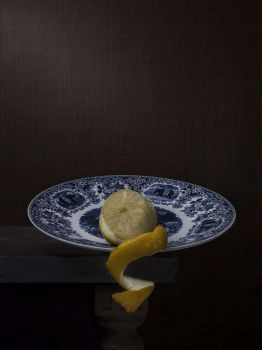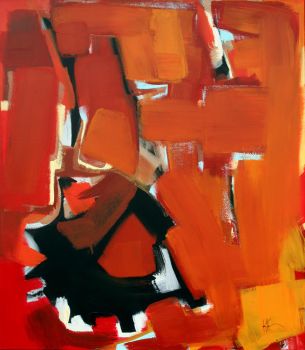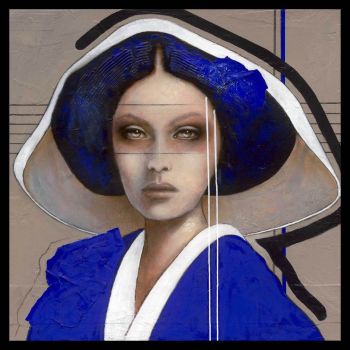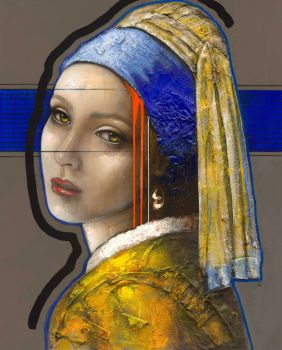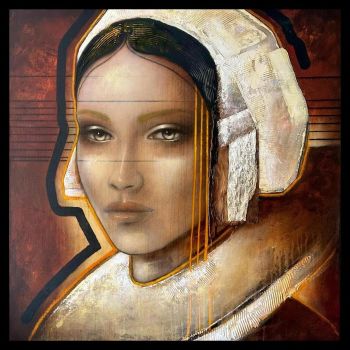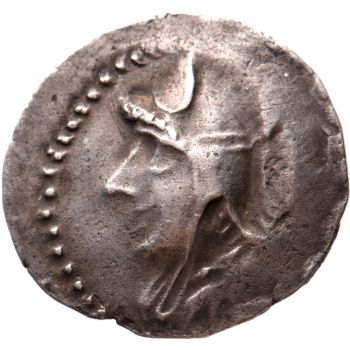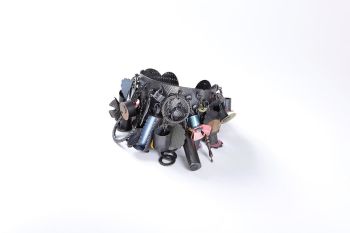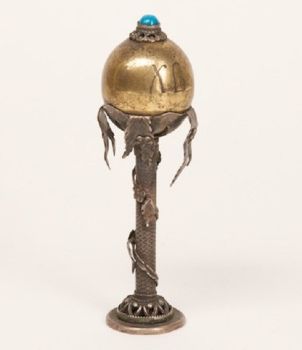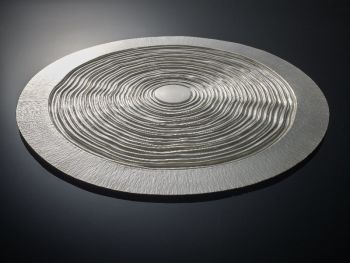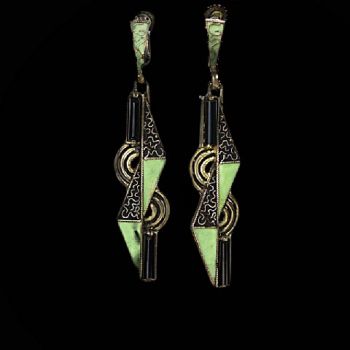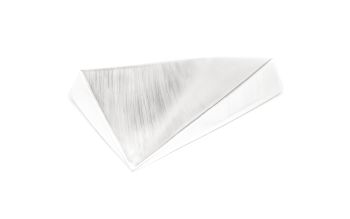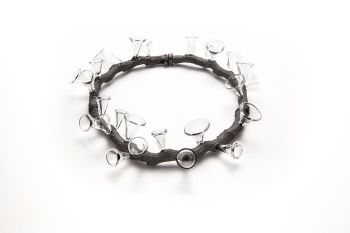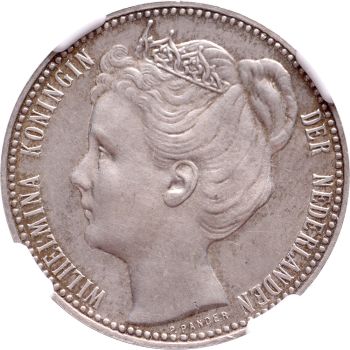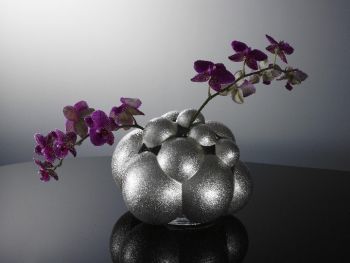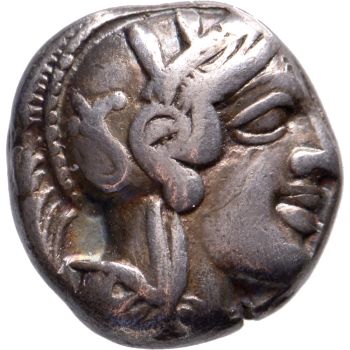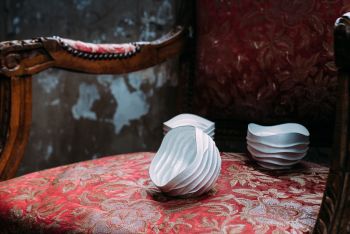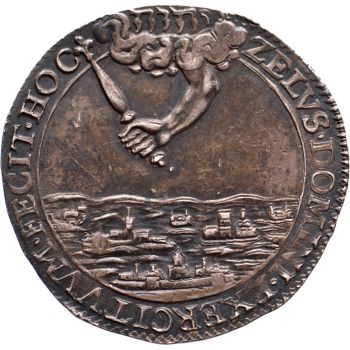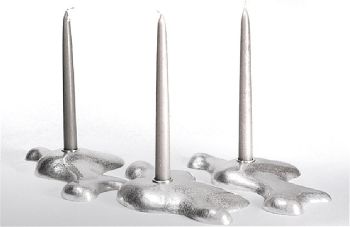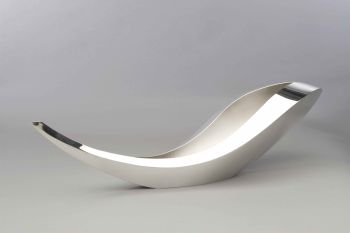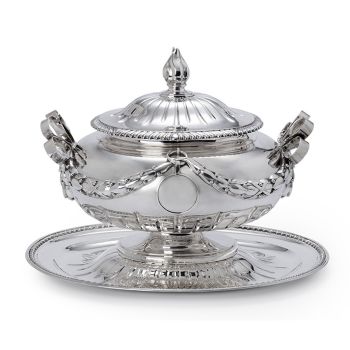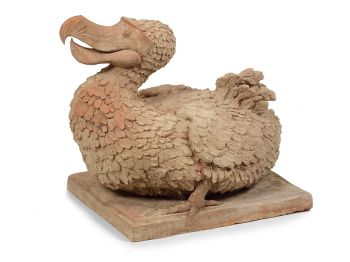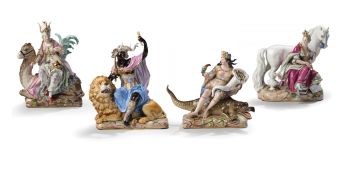UN CUCCHIAIO E UNA FORCHETTA D'ARGENTO COLONIALI ESTREMAMENTE RARO (NEW YORK) 1672
Artista Sconosciuto
Argento
16 cm
Attualmente non disponibile tramite Gallerease
Zebregs & Röell - Fine Art - Antiques
- A proposito di opere d'arteAN EXTREMELY RARE 'GEDACHTENIS LEPEL EN VORK', COMMEMORATIVE SPOON AND FORK
Silver apparently unmarked, Dutch colonial, New Amsterdam (New York), circa 1672
The unusual triangular handles are decorated with zoomorphic ornaments in the “kwab-stijl”, the Auricular style, made popular in the Netherlands by Paulus van Vianen in the first half of the 17th century, the spoon engraved to the back of the bowl “SARA LEWES. Obijt 7 Iunij 1672” and the fork engraved to the back of the centre prong “SARA LEWES Ob. 7 Iunij 1672.”
L. 16.5 cm
Weight spoon: 43 grams
Weight fork: 34 grams
Note:
To commemorate a deceased relative in silver was a Dutch tradition in the 17th and 18th century. In the Dutch East Indies, particularly in Jakarta (Batavia), commemorative salvers were made in large quantities and still many survived although undoubtedly most have been melted down in the course of time. Sometimes salvers made in Holland were later engraved in Batavia. Commemorative spoons are much rarer (for an example made in Batavia 1694, in memory of Margareta van Hoorn, see Uit Verre Streken, March 2013, item 3).
The first time the present spoon and fork were described was by Stephan Welz in Cape Silver… , A.A. Balkema Rotterdam 1976, pg. 90-91. Stephan Welz assumed the set was made in the Cape, but that seems to be very unlikely. No “kwab-stijl” decorations are known in Cape silver because all silversmiths in the Cape were of German or English origin, Cape silver spoons are of Hanoverian or Old English style. Besides, no Cape silver spoons are known before the early 18th century.
The second mention of the set is by Kevin Brown, who bought the set in Cape Town, in A 1672 Dutch Memento Mori Spoon and Fork Set, in Silver Magazine, September/October 2008, pg. 20-24. Kevin Brown argues that the set is the earliest known New York memorial silver. In two further articles (A Dutch Memento Mori Spoon & Fork set, 1672. From New York? The Finial, Journal of the Silver Spoon Club of Great Britain. December 2011, Vol. 22, pg. 5-10 and Alena Buis and Kevin Brown Triffling Things? The Sara Lewes Memorial Lepel and Vork. Dutch Crossing, Vol. 36, No. 6, November 2012) Kevin Brown substantiates his supposition that the set was made in New York.
The “Kwab-stijl” was very popular in Holland and Friesland and many spoons with zoomorphic finials were made there in the first half of the 17th century. Dutch silver spoons are practically always marked. In New York one other spoon in the “Kwab-stijl” is known, made and marked by Cornelius Van Der Burch (New Amsterdam 1653 – New York 1699), commissioned for the funeral in New York of Henricus, son of Pieter and Hester Deursen in 1692 (collection of Yale University Art Gallery). The form of this spoon is almost identical to the present spoon.
Sara Lieuwes was born in Leeuwarden, Friesland in 1643, the younger sister of Sytske Lieuwes (1642). Sytske married Gerrit de Wees in 1662 and in 1663 they moved to New York where Sytske appears in the records of the Dutch Reformed Church spelt as “Lievens”. The Frisian name of “Lieuwes” apparently was not well understood by the church recorder and transformed into the common Dutch/Amsterdam name of “Lievens”. In the same way in the English colony New York, in 1672 Lieuwes may have been anglicised into Lewes. There are no records of Sara’s presence in New York. So presumably Sytske and Gerrit had the set made in New York (by Cornelius Van Der Burch?) as a memorial to Sara Lieuwes death in 1672. The other possibility is that Sytske and Gerrit had the set already with them when they moved to New York and only in 1672 engraved there. However, this seems unlikely, since the set shows no wear. Memorial spoons were made to commemorate a deceased loved one, not for practical use.
In addition, this would make the fork the oldest known silver fork made in New York. - A proposito di opere artista
Può succedere che un artista o un creatore sia sconosciuto.
Alcune opere non sono determinate da chi sono state realizzate o sono state realizzate da (un gruppo di) artigiani. Esempi sono statue dell'antichità, mobili, specchi o firme non chiare o leggibili ma anche alcune opere non sono affatto firmate.
Inoltre puoi trovare la seguente descrizione:
•"Attribuito a …." A loro avviso probabilmente opera dell'artista, almeno in parte
•“Studio di ….” o “Officina di” A loro avviso un'opera eseguita nello studio o nella bottega dell'artista, eventualmente sotto la sua supervisione
•“Cerchio di…” A loro avviso un'opera del periodo dell'artista che mostra la sua influenza, strettamente legata all'artista ma non necessariamente al suo allievo
•"Stile di..." o "Seguace di..." A loro avviso un'opera eseguita nello stile dell'artista ma non necessariamente da un allievo; può essere contemporaneo o quasi contemporaneo
•“Modalità di…” A loro avviso un'opera nello stile dell'artista ma di epoca successiva
•"Dopo …." A loro avviso una copia (di qualsiasi data) di un'opera dell'artista
•“Firmato…”, “Datato…” o “Iscritto” A loro avviso l'opera è stata firmata/datata/inscritta dall'artista. L'aggiunta di un punto interrogativo indica un elemento di dubbio
•"Con firma....", "Con data...", "Con iscrizione..." o “Riporta firma/data/iscrizione” a loro avviso la firma/data/iscrizione è stata aggiunta da qualcuno diverso dall'artista
Sei interessato ad acquistare questa opera d'arte?
Artwork details
Related artworks
Artista Sconosciuto
Gobelet vénitien ailé1624 - 1626
Prezzo su richiestaPeter Korf de Gidts - Antiquairs
1 - 4 / 12 A cura di
A cura diDanny Bree
Artista Sconosciuto
Een Gotische zuidelijke Nederlanden wandklok1580 - 1590
Prezzo su richiestaNico van den Assem restauratie
Artista Sconosciuto
A Surinam-themed Amsterdam long-case clock1746 - 1756
Prezzo su richiestaZebregs & Röell - Fine Art - Antiques
 A cura di
A cura diGallerease Magazine
Johannes van Dreght
Antique Dutch still life flowers in vase1740 - 1800
Prezzo su richiestaGallerease Selected
 A cura di
A cura diDanny Bree
Artista Sconosciuto
Verre à boire Cristallo façon de Venise1600 - 1650
Prezzo su richiestaPeter Korf de Gidts - Antiquairs
Eduard Charlemont
‘Allegories of Africa and America’1872
Prezzo su richiestaZebregs & Röell - Fine Art - Antiques
1 - 4 / 24Johannes Schiotling
Un paio di candelieri olandesi in argento1784
Prezzo su richiestaJacob J. Roosjen SRI
Artista Sconosciuto
Un cestino di dolci d'argento olandese1738
Prezzo su richiestaJacob J. Roosjen SRI
Elisabeth Treskow
Lapislazzuli afgano intarsiato con oro su un supporto d'argento1950 - 1960
Prezzo su richiestaJacob J. Roosjen SRI
Salomon Lamberts
Teiera d'argento a forma di zucca olandese1766
Prezzo su richiestaJacob J. Roosjen SRI
Reynier de Haan
Un'elegante coppa Monteith in argento olandese Luigi XVI1778
Prezzo su richiestaJacob J. Roosjen SRI
Jan Cornelis van Hemert
Cestino di dolci in argento olandese1799
Prezzo su richiestaJacob J. Roosjen SRI
Frederik Rudolf Precht
Trancio di pesce d'argento olandese1756
Prezzo su richiestaJacob J. Roosjen SRI
1 - 4 / 24Artista Sconosciuto
UN NETSUKE IN AVORIO DI UN OLANDESE CHE GIOCA CON UN RAGAZZINO18th century
Prezzo su richiestaZebregs & Röell - Fine Art - Antiques
Artista Sconosciuto
Due ritratti di studio di Mas Marco Kartodikromo1900 - 1950
Prezzo su richiestaZebregs & Röell - Fine Art - Antiques
Artista Sconosciuto
Olandesi in miniatura (Netsuke)1700 - 1900
Prezzo su richiestaZebregs & Röell - Fine Art - Antiques
Artista Sconosciuto
UN NETSUKE MARINO IN AVORIO DI UN OLANDESE CHE TIENE UN FAN . CINESE18th century
Prezzo su richiestaZebregs & Röell - Fine Art - Antiques
Artista Sconosciuto
Japanese transition-style lacquer coffer 1640 - 1650
Prezzo su richiestaZebregs & Röell - Fine Art - Antiques
Artista Sconosciuto
UN INSOLITO PIATTO D'ARGENTO LOBBATO INDONESIlate 17th
Prezzo su richiestaZebregs & Röell - Fine Art - Antiques
Artista Sconosciuto
UN PICCOLO NETSUKE IN AVORIO DI UN OLANDESE CON UN TAMBURO1750 - 1800
Prezzo su richiestaZebregs & Röell - Fine Art - Antiques
1 - 4 / 24Artista Sconosciuto
Uovo di Pasqua di presentazione russo d'argento1880 - 1899
Prezzo su richiestaH.W.C. Dullaert Art & Antiques Dealer
1 - 4 / 24Carlo Bellini
A terracotta sculpture of a dodo20th century
Prezzo su richiestaZebregs & Röell - Fine Art - Antiques
Roland Strasser
Geisha giapponese20th century
Prezzo su richiestaZebregs & Röell - Fine Art - Antiques
Hubert Vos
Ritratto di un punjabi nell'India britannica1898
Prezzo su richiestaZebregs & Röell - Fine Art - Antiques
Paulus Franciscus Kromjong
Fiori davanti ad Arearea Aka (gioia) di Gauguin'20th century
Prezzo su richiestaZebregs & Röell - Fine Art - Antiques
Artista Sconosciuto
A Surinam-themed Amsterdam long-case clock1746 - 1756
Prezzo su richiestaZebregs & Röell - Fine Art - Antiques
 A cura di
A cura diGallerease Magazine
Engelbert Kaempfer
IL LIBRO DI ENGELBERT KAEMPFER1651 - 1716
Prezzo su richiestaZebregs & Röell - Fine Art - Antiques
1 - 4 / 12

